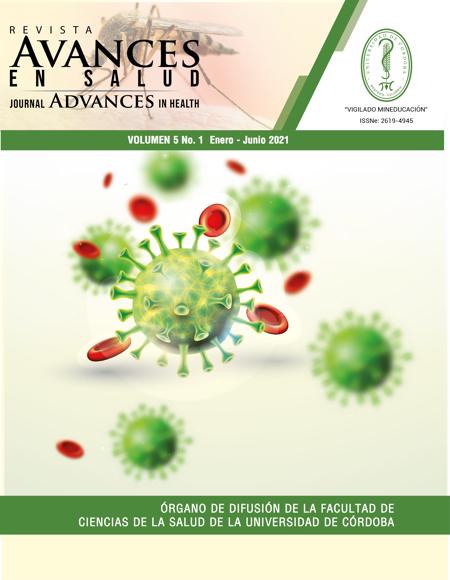Situational diagnosis of the malaria program in Commune 5 of Tumaco 2019-2021. Preliminary results.
Diagnóstico situacional del programa de malaria en la Comuna 5 de Tumaco 2019-2021. Resultados preliminares.
Show authors biography
Objective. To determine malaria prevalence, entomological characteristics, and activities of the prevention and control program in the urban area of Tumaco (Comuna 5), between 2019 and 2021. Materials and methods. Descriptive study, funded by Minciencias, based on qualitative-quantitative methodology. The quantitative methodology used probabilistic sampling, structured questionnaires, thick blood smear diagnosis, and rapid diagnostic test; we identified the presence of vectors through traps and active search; we estimated prevalence, frequencies, percentages, and entomological indices. The qualitative approach used non-probabilistic sampling, semi-structured interviews, and content analysis. Results. A total of 1,504 individuals participated. The prevalence by thick blood smear and rapid test of 0.73% and 0.53%, respectively. We identified Plasmodium falciparum; we found 37 adults per domicile and 32 larvae in wells and ponds of Anopheles albimanus. The man-night biting index of 0.74, man-hour biting index of 0.06, greater biting activity between 18:00-19:00 hours. The stakeholders reported delays in care, diagnosis, and treatment; difficult access to the diagnostic; organizational problems, lack of clarity of functions in institutions involved in the program, and lack of interest of the communities in prevention and control. Conclusions. The prevalence was low, the vector was found in per domicile and artificial breeding sites, and it is necessary to continue improving diagnosis and treatment for malaria prevention and control.
Article visits 606 | PDF visits
Downloads
1. Organización Mundial de la Salud. Estrategia Técnica Mundial contra la Malaria 2016-2030. Disponible en: https://apps.who.int/iris/bitstream/handle/10665/186671/9789243564999_spa.pdf;jsessionid=0FD69B9AF1DC25A0F91E3C66F7C42CA0?sequence=1
2. Plan De Acción para la Eliminación de la Malaria. Organization Panamericana de la Salud 2014-2019. Disponible en: https://www.paho.org/hq/dmdocuments/2016/CD55-13-s.pdf?ua=1
3. Ministerio de Salud y Protección Social. Dirección de Promoción y Prevención. Subdirección de Enfermedades Transmisibles. Grupo Enfermedades Endemo-Epidémicas. Plan Estratégico Nacional de Malaria 2019- 2022. Disponible en: https://www.minsalud.gov.co/sites/rid/Lists/BibliotecaDigital/RIDE/VS/PP/PAI/plan-estrategico-malaria.pdf







